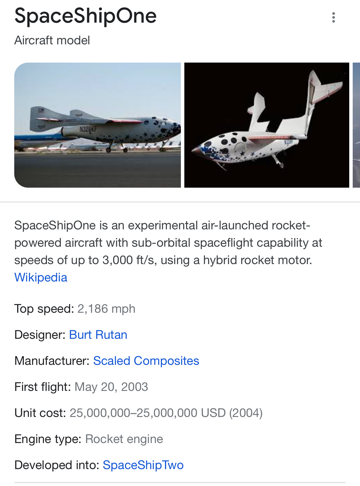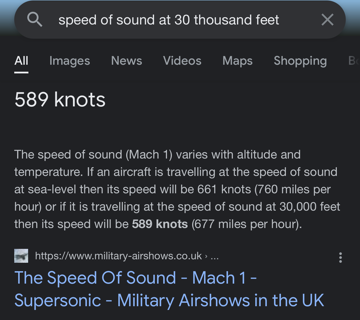Welcome 🙏🏻 back to Jets in Space!
Today we are going to explore the concept of orbits, escape velocities and possible correlation with IAP.
I looked up escape velocity on the internet and read that to escape the power of earth’s gravity, we have to accelerate the vehicle to 7 miles per second!!! Which translates to approximately 25,000.00 miles per hour. When I read this, I was at first hesitant to bring up IAP as a means to achieve escape velocity, however, it also inspired another thought experiment.
When we travel on an airliner, we eventually reach a cruising altitude of 30-40 thousand feet and the cruising speeds are always sub sonic, less than 600 miles per hour. Logistical analysis would demonstrate that this is the most cost and time effective way to move heavy loads over large planetary distances.
Looking at military combat aircraft where speed and maneuverability are prioritized over weight in the fighter types, turbofan engines are still used, but supersonic speeds can be achieved as the thrust to weight ratio is higher in fighter jets.
Another key variable in achieving great speeds within an atmospheric environment is the density of the air surrounding the aircraft.
Just a quick review of the 4 forces acting upon aircraft in an atmospheric environment: Thrust and drag. Lift and gravity.
The greater the altitude, the thinner the air. Above 10,000 feet, aircraft are required to have supplemental oxygen otherwise hypoxia can occur.
Internal combustion engines are less efficient at higher altitude due to decreased availability of oxygen for combustion. Altitude restrictions also affect propeller performance and lift generation from air foils (curved body capable of producing lift).
Getting back to air density and cruise configuration:
When you next fly Southwest ( My airline of choice) and the pilot makes the announcement you have reached a cruising altitude of 34 thousand feet, she is just telling the passengers the 4 forces are balanced at that altitude and speed. Lift equals gravitational forces so you maintain the 34 thousand altitude. Thrust equals drag so speed remains around 600 miles per hour.
As air density decreases at higher altitude, it becomes more difficult to maintain lift on the airfoil and thrust from the turbofan.
With IAP, air density for the turbofan is held constant by the airtight container. That’s all well and good, but will that help us reach an orbital velocity of 25,000 miles per hour?
My honest answer is I don’t know and as we have said in a previous episode, chemical rockets will most likely remain the mainstay for reaching orbital and escape velocities for the foreseeable future.
True experiments regarding sub orbital velocities could be achieved via piggy back experiments.
If you have ever seen the movie “The Right Stuff”, this film portrays in the beginning of the story the X-1 experiments to break the sound barrier. (As a side note, I shook the hand of General Chuck Yeager when I was stationed at Andrews Air Force Base in 1997). The X-1 did not take off from an airport under its own power or vertically like modern 🚀 rockets. It was carried to altitude by a propeller driven WWII bomber aircraft (B-29) then dropped from the underside of the bomber. The Spaceship One experiments used a similar method.
Again, it’s all about the pressure, or put another way, it’s all about how much thrust can be produced.
Saturn V produced 7.6 million pounds of thrust, but it was also lifting millions of pounds of fuel. The GE90 turbofan can generate 100,000 pounds of thrust, but we need to prove via experimentation that an IAP turbofan can also produce these levels of thrust inside an airtight container.
Let’s envision an experimental craft the size of a 🚌 school bus. Attached to the starboard and port sides are 2 GE90s in airtight containers (I’ll call these GE90 IAP Variant) for a total of 4 GE90s.
Assuming 400,000 lbs of thrust (100,000 x4), and using a piggy back vehicle to get the experiment to 40,000 feet or so at 600 miles per hour, could we achieve at least a minimal orbital velocity or reach the International Space Station?
As always, thrust to weight will be the determining factors. I believe Thrust to Weight determines maximum velocity at higher altitude as drag is minimized in the thinner atmospheric environment?
One key difference between 🚀 rocketry and IAP is time of acceleration. Rockets by design burn fuel at a rapid rate to produce large amounts of acceleration over small amounts of time.
For IAP, since we are not looking at quick bursts of acceleration, can we achieve smaller amounts of acceleration over longer periods of time? My primary concern would be gravity and the time limit you would have to achieve orbit before gravity would overcome your attempt to escape. In experiments like the X-1 and Spaceship 🚀 One, the craft eventually came back to earth without achieving orbital velocity.
Another possible option would be a combination of IAP and traditional chemical rockets 🚀.
I’m praying 🙏🏻 that we can attempt an experiment such as the above, God willing.
Notable Links
- Jets in Space Facebook Group
- Internal Atmospheric Propulsion IAP LinkedIn
- Internal Atmospheric Propulsion IAP Facebook
Podcast Production Services by EveryWord Media
Resources Mentioned:










